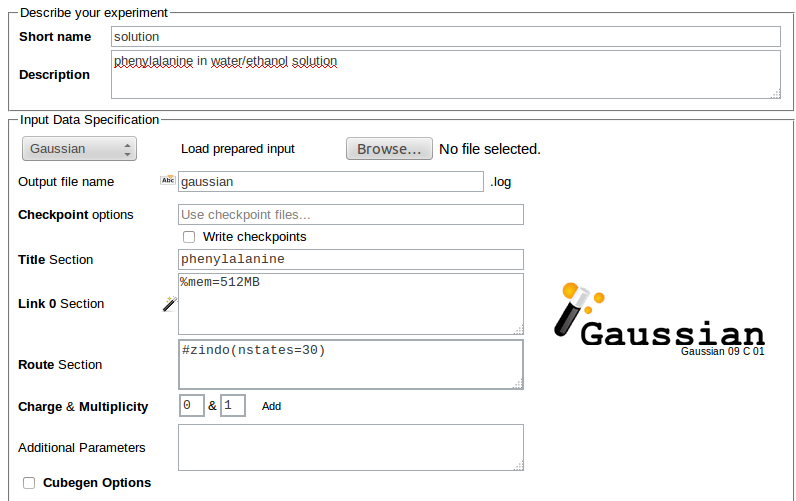Breaking News
Read Checkpoint File Gaussian
пятница 10 апреля admin 20
The name of the job. The checkpoint file name. See Reading gaussian checkpoint files if you don't understand. Specify the type of density matrix you want; in the above it is the rohf type. Bagas31.com. You don't need to do an scf calculation, just specify the kind of density matrix in scfdata=.
The formchk utility converts the data in a Gaussiancheckpoint file into a formatted for suitable for input into a varietyof visualization software. The following command will produce theformatted checkpoint file filename.fchk from thecheckpoint file filename.chk:
Nothing can stop us, we keep fighting for freedomdespite all the difficulties we face each day.Last but not less important is your own contribution to our cause. Our releases are to prove that we can! This should be your intention too, as a user, to fully evaluate Pinnacle Studio 18 Ultimate withoutrestrictions and then decide.If you are keeping the software and want to use it longer than its trial time, we strongly encourage you purchasing the license keyfrom Pinnacle official website. Serial number pinnacle studio 18 ultimate manual.
For more, see the formchkutility page in the online Gaussian user reference.
This document was developed with support from National Science Foundation (NSF) grants 1053575 and 1548562. Any opinions, findings, conclusions, or recommendations expressed in thismaterial are those of the author(s) and do not necessarily reflect theviews of the NSF.
Some Python Scripts for automating some tasks in gaussian, extracting and analyzing the results.
All scripts assumes a lot of things given by my working environment at tu ilmenau and are done so they do there job, not to be the very best solution
When given an input file with two molecules it 'moves' one of the molecules in given steps and calculates the given gaussian calculations for every step.
The 'moveing' is done by creating a seperate gaussian input file for every step and then submitting it to gaussian. The submitting is done via commandline statement using lsf (bsub) for loadbalancing.
There is no deeper understanding in the script of what a molecule is, the two molecules are simply given by the number of atoms belonging to the first/second molecule assuming that the first n atoms belong to the first molecule and the next (n+1 … N) to the second.
To work properly the script is needs a 'basename' for it‘s output files. It assumes that the basename is altough the name of the original input file.
To alter the way the molecules are moved you must edit the variables in the script.
##Example:##
The script is build to work with Python 2.4.
To extract certain values, lets say the electron orbitals energies, you need information stored in the .chk files of a calculation. To do this you first have to make sure your calculation is setup to save the checkpoint files. To get the values out of the checkpoint file, which is in a binary format, you then have to convert the files via the formchk tool included in gaussian to get a formated checkpoint file (ASCI).
This is done by the script saving every .chk file as a formated .fchk file. Then the alpha orbital energies are extraced, as well as the number of atoms to determin the energy gap between the HOMO/LUMO orbitals. Furthermore the first excited state energy from the .log files are read in. Both values are then stored in a text file, together with the number of the file from which they were read.
To work properly the script is needs a 'basename' for it‘s input files.
##Example:##
